Google Pixel 5 review: more steps forward than steps back
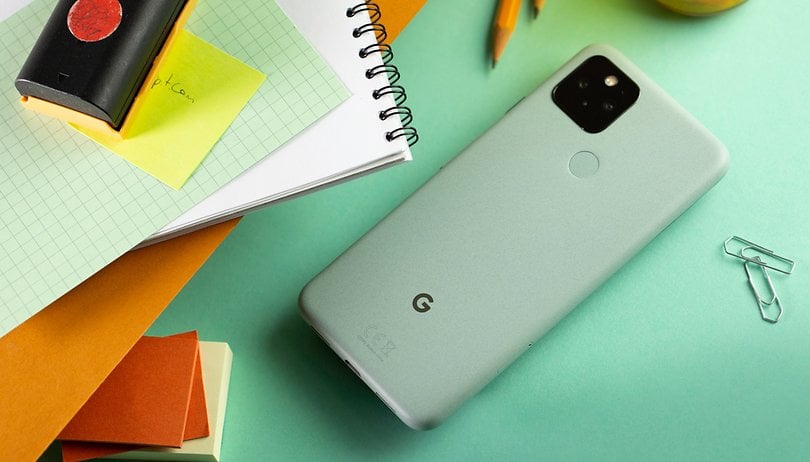

Following the much-lauded Google Pixel 4a for the mid-range segment, the 'flagship' phone out of Mountain View is finally here. The Pixel 5 marks a clear change in Google's smartphone strategy, as the search giant gives up its seat at the top table in terms of raw processing power in a bid to offer consumers a simple yet effective phone for a competitive price. The result is Google's best smartphone to date. Here's my full review for NextPit.
Good
- Still the best point-and-shoot camera
- Much-improved battery life
- Top-quality software & hardware optimization
- Compact form factor
Bad
- No true flagship performance
- Zooming feels better at Samsung
- No Facial Recognition unlocking
- 'Only' 90Hz refresh rate display
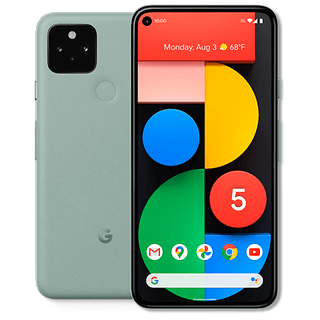
Google Pixel 5 release date and price
In the past, Google tried to compete at the top table in terms of smartphones with flagship specs and prices to match. For 2020, the Google hardware department has gone with a much more reserved approach. As smartphone prices soar above the $1,000 mark, the Pixel 5 comes to the market with a reduced price tag compared to last year's Pixel 4.
In the United Kingdom, the Pixel 5 costs £599. You can alternatively take Google's monthly payment option and settle for £24.96/month for 24 months and 0% APR. That's £100 cheaper than the Pixel 4 was last year. In the United States, the price is $699, down from $799 for the base model Pixel 4 (64GB).
There's also only one variant this year, which comes with 8GB of RAM and 128GB of internal storage. When you factor in the available internal storage, the Pixel 5 is $200 cheaper than the same storage model Pixel 4 was last year in the USA. Two colors are available this year: Just Black and the new Sorta Sage I've been using.
I can live with the price of the top Pixel this year, which comes in at around half that of the top models from Samsung and Apple. The Samsung Galaxy S20 FE is more of a competitor, coming in at £100 more than the Pixel at launch, but should drop in price quicker than the Pixel. The spanner in the works for Google this year, however, is the £549 OnePlus 8T, which with its Snapdragon 865 is more powerful than Google's offering, plus you get a 120Hz display and faster charging.
Back-to-basics design
When Google launched the Pixel 4a earlier this year, we got a glimpse of the direction the company was heading with its smartphone design. Similarly to what OnePlus is doing with the Nord, we're seeing a kind of pushback against the all-glass, expensive designs of the flagships of the last two years. The Pixel 5 has gone right back to basics, and that's a good thing.
You still get an aluminum body this year with the top Pixel, but there are few frills on top. It's a conservative approach but one that feels welcome. The back and sides of the phone are texture-coated, resulting in a grippiness that is satisfying in the hand, and the chrome-accented power button allows you to easily distinguish it from the volume rocker. In Sorta Sage, it's a design I find attractive, almost minimalist in 2020. The weight comes in at 151g.
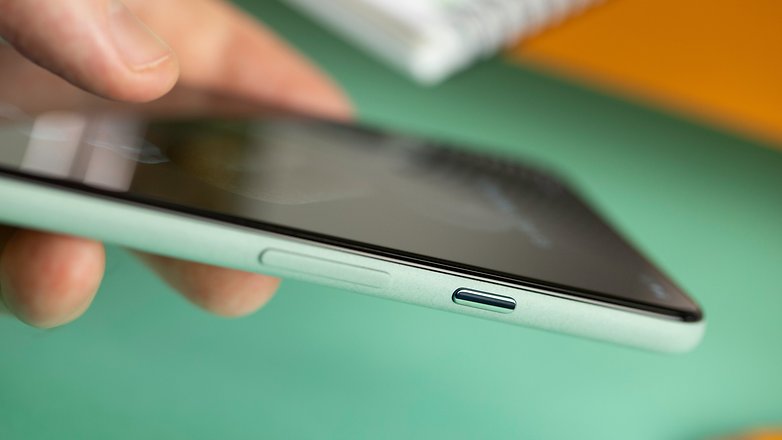
You get a slightly larger display on the Pixel 5 (6 inches) compared to the Pixel 4a (5.81 inches) and the phone does feel wider in the hand despite the horizontal difference only being 1mm. The Pixel 4a 5G, launched at the same time as the Pixel 5, is bigger again, placing the most powerful device in Google's 2020 Pixel lineup right in the middle in terms of both display size. The display resolution for the Pixel 5 is 1080 x 2340 pixels, 19.5:9 ratio (432 ppi). It's nice and sharp and easy on the eye, but don't be expected the same vivid experience you get on an S20 series or Note 20 Ultra, for example. Samsung is still top of the class when it comes to smartphone displays in my opinion.
90Hz remains, but 120Hz has become the standard
One of the smaller compromises you make when you opt for a 'flagship' Pixel 5 over a four-figure flagship from the competition (with the exception of Apple's iPhones) is the reduced refresh rate of 90Hz. The 6-inch OLED supports HDR10+, but is lacking the 120Hz refresh rate that has become the standard for the top models at Samsung, OnePlus, Realme, and Oppo. There are those who still doubt the benefit of high refresh rate displays, but I am certainly not one of them. I am all about smooth scrolling, and it's hard to go back to 60Hz once you have gotten used to 120Hz. Life at 90Hz, however, is doable.
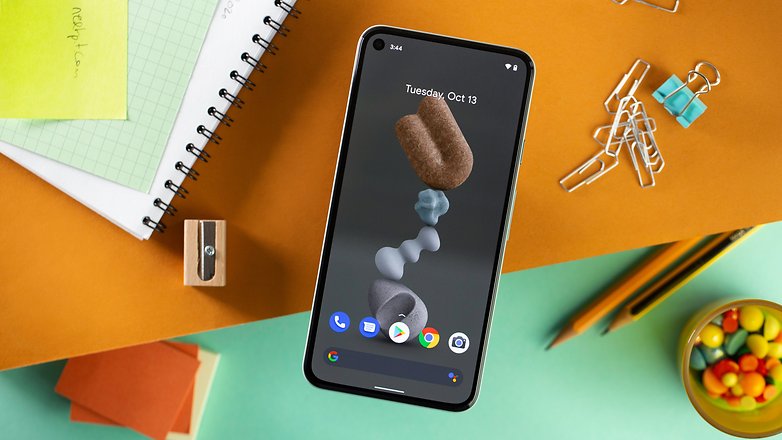
Just like with the Pixel 4, Google still ships the phone with an adaptive refresh rate on by default. To force the display to run at 90Hz at all times, you have to activate the developer settings and find the relevant option. With battery life no longer an issue (more on that later), I'd recommend doing this as part of your initial setup.
Overall, the Pixel 5 is a compact, handy smartphone that offers daily comfort to those how have grown tired of the trend for huge displays, heavy phones, and unwieldy form factors.
Android 11's Pixel-exclusive features
Owning is a Pixel smartphone is, in my opinion, the definitive Android experience. Not only do you get the latest version of Google's OS, but you get exclusive features baked right into the UI. Last year, with the Pixel 4, the Soli Radar technology opened the door to features such as Motion Sense, but we also saw Live Transcribe and several others come to Made by Google phones. This year, the Pixel-exclusive feature set is a little less exciting given Google's strategy to go with more conservative hardware, but there are a couple of software features worth mentioning in this review.
Live View with Location Sharing in Google Maps is the headline feature. It uses augmented reality in combination with Google Maps Live View feature to show you, in real-time, the pinpoint spot of friends who have chosen to share their location with you. It's not something that necessarily aids in tracking them down on organized streets, but in large parks and open areas it can come in handy.

Other new Android 11 features , such a Bubbles, a better Gbaord, built-in screen recording, and improved smart home operation make Android 11, and this the Pixel 5, one of the purest and easiest to use Android phones. We have detailed the new features of Android, including those exclusive Pixel phones, in the article linked below:
The Snapdragon sacrifice
Arguably the biggest decision Google made this year with its Pixel lineup was to resist the latest high-end SoCs on the market and instead opt for a more modest Qualcomm Snapdragon 765G . Not only does this keep this price reasonable, but it means that 5G is also supported.
It's a move that positions Google slightly differently in the hardware market than with previous Pixel phones, which featured the latest Qualcomm chips available at the time of launch, and there will be a group of hardcore Pixel fans who are upset that there is no option to buy a Pixel with a Snapdragon 865, or similarly powerful chip, this year. After all, the 'flagship' Pixel 5 comes with the same processor as the £379 OnePlus Nord and the £299 Realme X50 5G.
And yet, despite the seemingly mid-range SoC, I think this decision makes sense for Google this year. The Snapdragon 765G is a very capable chipset and for 90 percent of consumers who barely push their smartphones to the limits of what they are capable of anyway, it's arguable that you'd even notice the difference in performance if you opted for a Pixel 5 over an S20 this year - particularly in Europe where Exynos chips still live in Samsung's top phones.
Google is catering to the masses here and gone with hardware that works in daily life rather than what looks good on a spec sheet. The stock Android 11 software and some optimization for the less-powerful hardware help blur the lines between what you need to get the job done and what is currently considered high-end.
The area where you most notice the drop in performance from last year's Pixel 4 is when using the camera app. Google has been able to consistently come top of camera performance tests with its pretty ordinary 12.2-megapixel sensor thanks to software and, in particular, what the Pixel does behind the scenes when you are shooting photos and video. This reliance on computational photography means that you do notice some slow-down when shooting lots of photos in a short space of time, as the Pixel 5 works overtime to get all of that complex processing done with a mid-range chipset.
Google Pixel 5 benchmark comparison:
| LG Velvet (765G) | Google Pixel 5 (765G) | OnePlus Nord (765G) | |
|---|---|---|---|
| 3D Mark Sling Shot Extreme ES 3.1 | 3001 | 2326 | 3219 |
| 3D Mark Sling Shot ES 3.0 | 3984 | 3129 | 4425 |
| Geekbench 5 (Simple / Multi) | 536 / 1852 | 578 / 1574 | 605 / 1936 |
| Mémoire PassMark | 20276 | 21708 | 21799 |
| Disque PassMark | 66528 | 67844 | 64489 |
Point-and-shoot perfection
There's something warm and comforting about Google's commitment to putting point-and-shoot photography at the very center of the Pixel experience, and making it the best it can possibly be. Over the past couple of years I've testing dual, triple, and quad cameras, plus one with five lenses that all shoot at the same time, and what feels like an infinite number of telephoto, wide-angle, macro, and depth-sensing combinations. They've popped up and flipped over. One has even swiveled around. But at the end of the day, nine times out of 10 when I go to take a photo, I pull out my phone and snap on the default mode with the main lens. And it's in exactly those nine situations that you want to be using a Google Pixel.
There have been some improvements this year over last year's effort though, depending on how you look at it. The telephoto lens from the Pixel 4 has been replaced by a 16-megapixel (f/2.2,107˚,1.0µm) ultra-wide-angle sensor. The decision to opt for telephoto over wide-angle was a strange one last year, given how much Google empathizes its software-based SuperResZoom technology, which is back again this year. It's fine up to about 2x, but gets pretty ropey after that.

The main shooter is the trusty old 12.2-megapixel sensor (f/1.7, 27mm, 1/2.55", 1.4µm, dual pixel PDAF, OIS). It's more or less the same as the one we got on the Pixel 4, and on the Pixel 3, and on the Pixel 2 in 2017. And yet, it still does the business. Most of the photos you take on the Pixel 5 look excellent from the first tie you hit the shutter button. There's no faffing around with settings or sliders. One button press and Google does the rest for you, with remarkably consistent results.
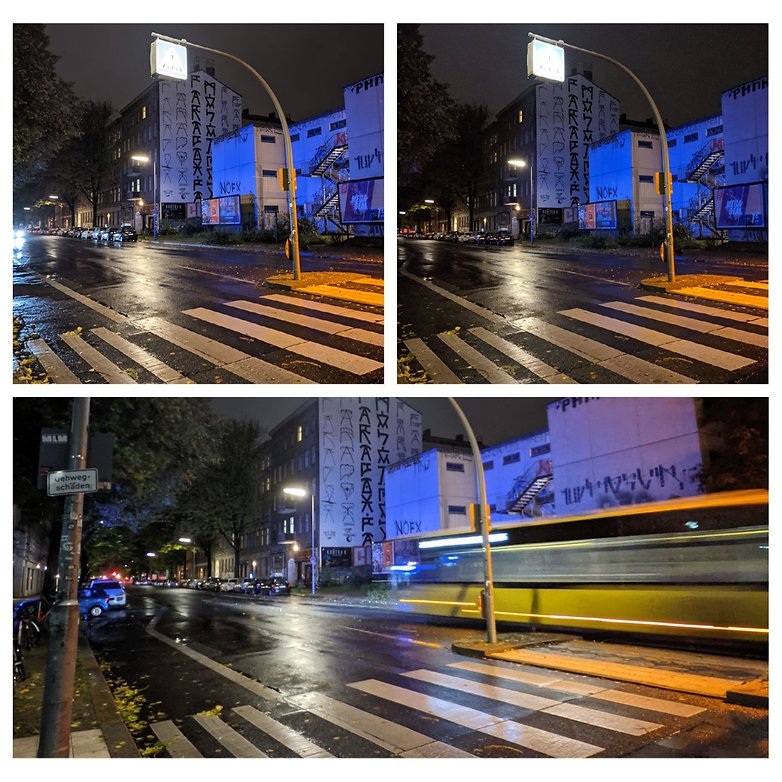
Night Sight is now triggered automatically in low light conditions, which I did find a little frustrating at times - largely when trying to capture comparison shots, admittedly - and portrait mode has been upgraded to allow you to change the angle and intensity of light around the subject. I did get a couple of dodgy results when using Night Sight on the 8-megapixel (f/2.0, 24mm,1/4.0", 1.12µm) selfie camera, however. This could be a teething problem in the software that is fixed further down the line, but I've included them here anyway in the name of transparency.

Google is still well behind Samsung and Apple when it comes to video recording, but the Pixel 5 does introduce 4K video at 60 frames per second, plus a new cinematic pan mode that improves stabilization by slowing movement.
On Android 11, Google lens is conveniently built into the camera app now. When looking through the viewfinder, you can long-press on an object in the frame and search for it via Lens directly, without having to switch apps. Lens is an underused feature on Android, and this implementation definitely makes its integration much more fluid. It works really quickly on the Pixel 5, too.
Battery life is no longer the Achilles heel
There's no beating around the bush on this one, the battery life of the Google Pixel 4 was horrible. It became so much of a running gag in our editorial office that I joked about it being Google's most successful Digital Wellbeing feature. The problem was two-fold. A measly 2,800 mAh battery and a top bezel packed with energy-hungry technology such as the new Soli Radar chip and IR sensors for Face Unlock, Motion Sense, and more.
Google opted to take no risks with the Pixel 5 and solved the problem by coming at it from both angles. The Soli Radar stuff was promptly axed, with Face Unlock being replaced by a traditional rear-mounted fingerprint sensor, and the battery capacity was bumped up to 4,080 mAh. Job done, right?
Well, actually, yes! During my testing, the battery analytics suggest a full charge lasts about two days and 17 minutes based on my current usage. This is despite running more than an hour of benchmark tests on the day these screenshots were taken.
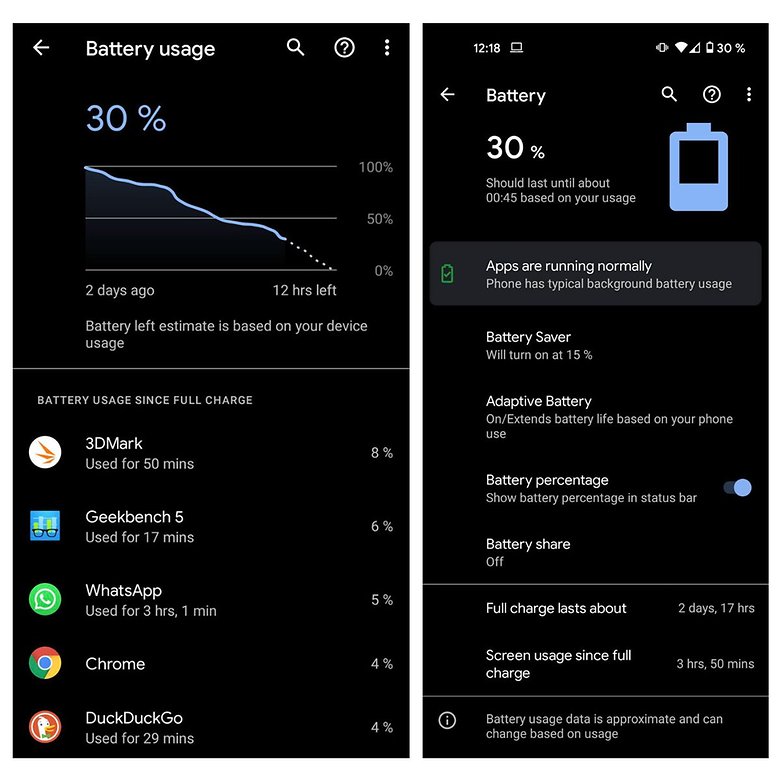
My on-screen time is not what you would call extremely high usage, but I made a concerted effort to use the phone as I would normally in daily life (i.e. not as I would during a typical review process where I am frantically trying to test all the features in a short space of time). I used the Pixel 4 as my daily driver for more than 100 days before the awful battery life eventually got the better of me. I wanted to see if the Pixel 5 really had made as much progress as Google said it has in this area, and thus tested it in this way. For the record, I forced the 90Hz refresh rate in the developer settings on the Pixel 5 from day one, as I did on the Pixel 4.
Battery life is no longer the Achilles heel of the latest Pixel and, if anything, has actually become one of its biggest strengths. It shows that Google is learning from the hardware mistakes of its past, and that can only be a positive thing.
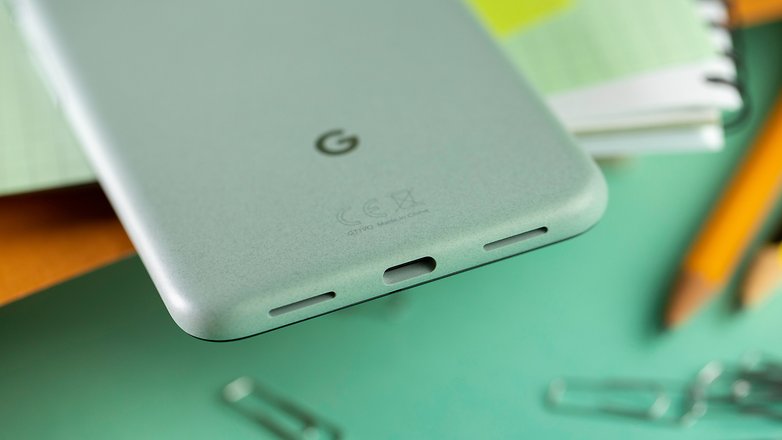
Google Pixel 5 technical specifications
The people's Pixel will find an audience
Google has gone back to basics with the Pixel 5 and, in many ways, it's a phone that has been designed and built for fans of the older models. The experimental Soli Radar stuff that killed the battery life is gone, and everything that made Pixel phones great has been retained - a fantastic, easy-to-use camera, the best software in the business, and a compact form factor that works for most people.
For the truly heavy users of this world, the Pixel 5 cannot rub shoulders with the top end devices on the market today. Gamers should look elsewhere. Those who want a capable Pro camera mode should also ignore this. Vloggers and wannabe social media influencers looking to shoot video should get an LG Wing. But whilst the flagship-performance of the previous generations may be gone, the core Android experience remains unchanged.
The Pixel 5 is the people's Pixel, and the £599 price tag feels like a sweet spot in 2020. You may get more hardware for your money at OnePlus, but you miss out on the point-and-shoot camera quality and exclusive software features, both of which have the potential to improve further over the next two years via updates if you opt for the Made by Google smartphone.
Note: I did not touch on the 5G performance in this review. As regular readers will know, NextPit is based in Berlin, Germany, and there is very little 5G network coverage here at the time of writing. I was unable to run any significant testing. Having support for the fifth generation of mobile networking might not be a deal-maker or breaker for many around the world today, but over the course of the two or three-year lifespan of smartphone, it makes sense to future-proof from 2020.
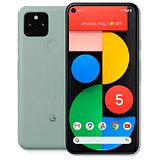




















Nice collection